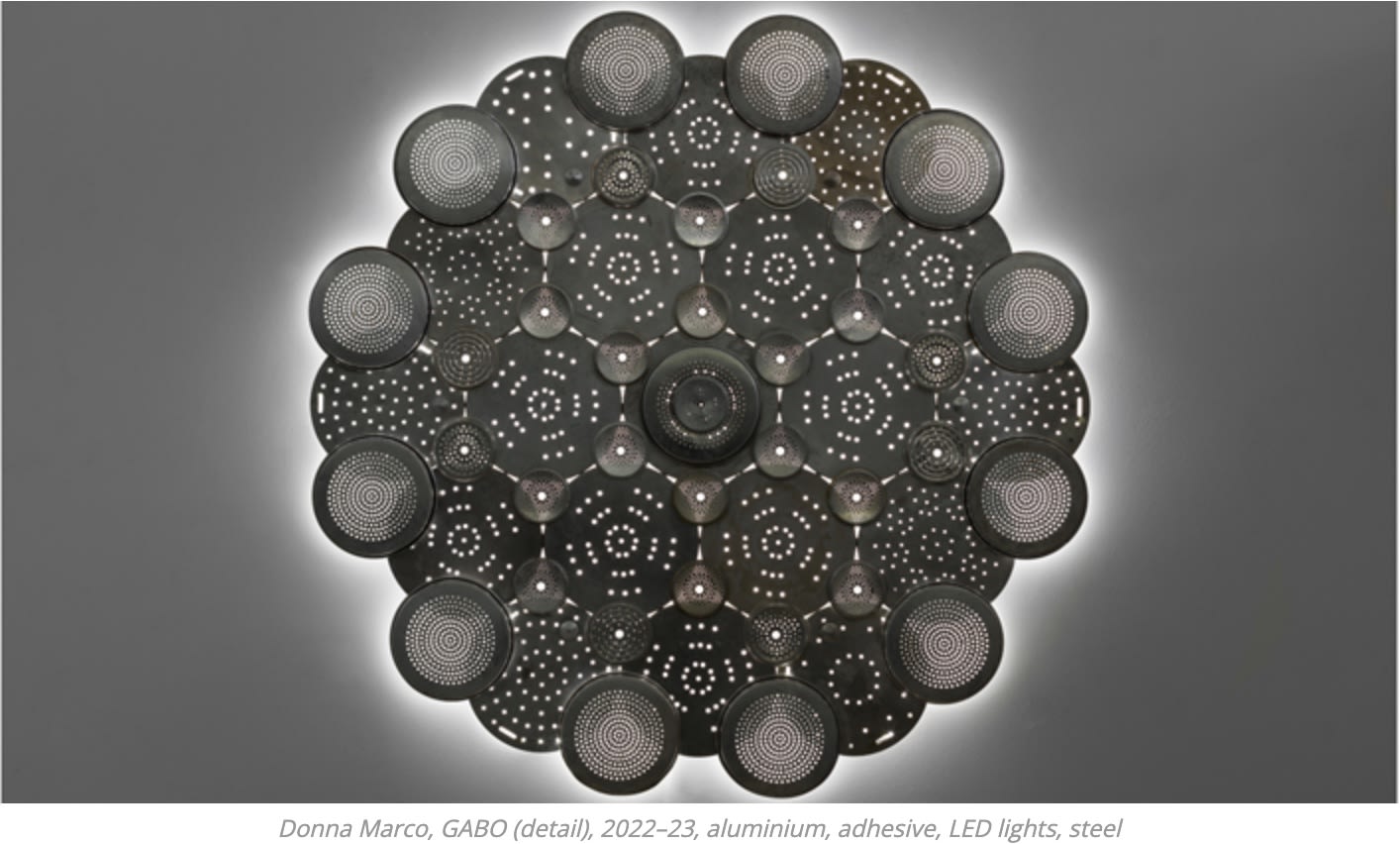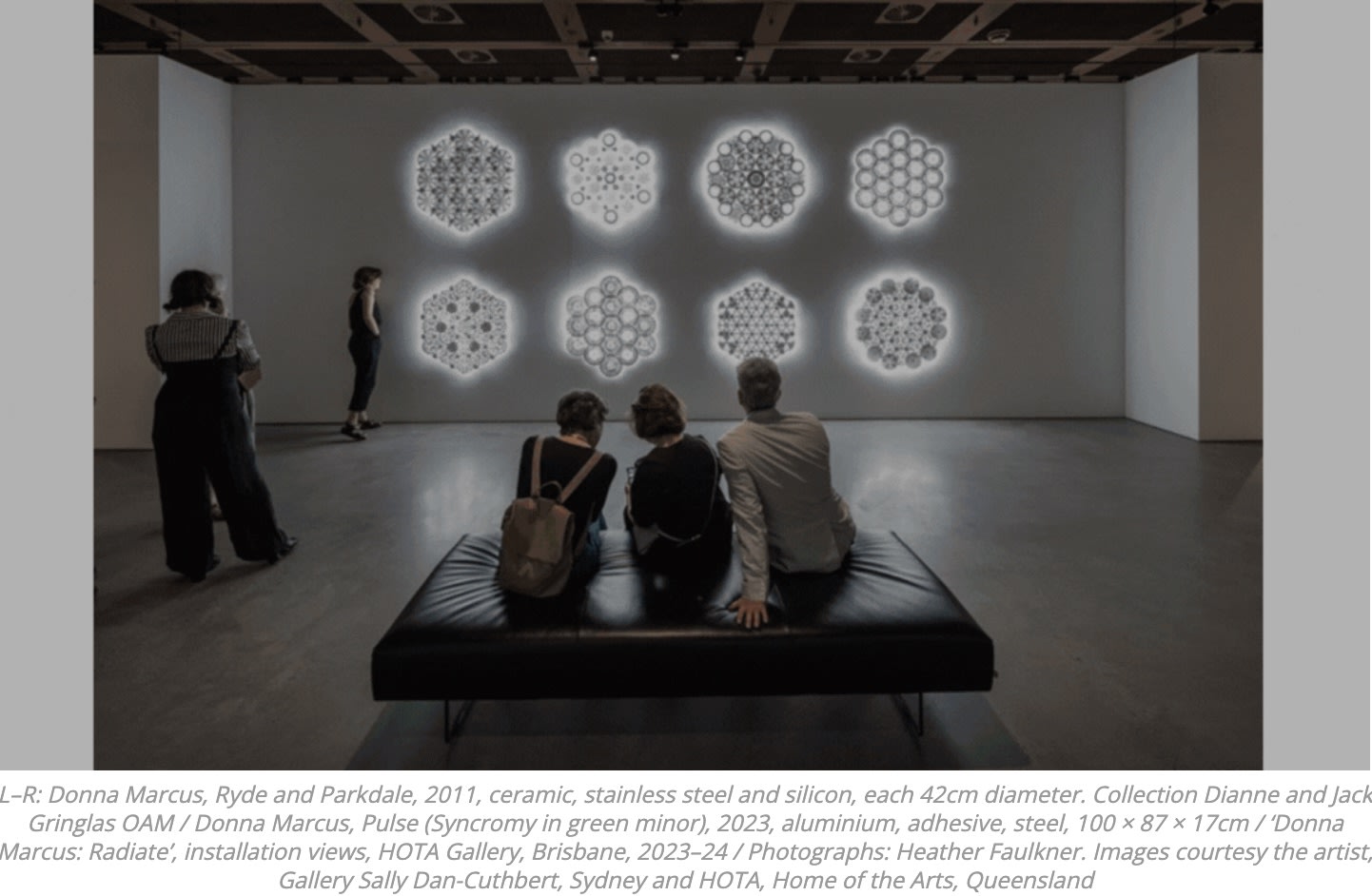“. . . a whole raft of new ideas”
Donna Marcus’ survey exhibition Radiate at the Gold Coast’s HOTA Gallery does just that. Her use of recycled aluminium kitchenware is transformed into a biographical sketch in this exhibition, prefaced with the SS Gabo. This ship was the home of Marcus’ mother Thora as a child, progressively dismantled and sold as salvage. It’s a family story that has hovered in her imagination for decades, but has resonated particularly strongly in the last ten years. For Radiate, her own GABO, 2022–23, is eight large works constructed from aluminium which emit simmering light and tension behind their black forms.

You express some relief that you have finally got GABO out of your system. Can you describe the genesis and gestation of this major sculptural work?
GABO began with the North Sydney Art Prize in 2022. I installed Five Tattings, 2022, on the beautiful tunnel walls of the coal loader, the site a stone’s throw from Berry’s Bay. This is where the SS Gabo was moored in the late 1920s, with my mother and family living aboard.
It draws on the story of my grandmother’s lace curtains, which she hung below decks while the Gabo was being scrapped above deck. GABO, in a sense, is also an illuminated tableau of twentieth century industrial design history of the type found in many homes.
HOTA gave me the ideal wall to finally resolve GABO, with a full octet of parts and some closure but inevitably a whole raft of new ideas.
Previous readings of your work have been dominated by modernism, repetition and Rauschenberg-style reuse. Has this personal narrative prompted a shift in your aesthetic?
There is not so much a shift in the aesthetic but a following of my interest around small and larger histories. In this case my abiding interest in the overlap of the aesthetics of the industrial and the domestic, salvage and re-use, was readymade in my mother’s narratives of life in Berry’s Bay.
These histories led me to the postwar aluminium and wartime collecting regimes. The found materials themselves, including the beautiful debris and cast-off pieces retrieved and collected over decades are pretty insistent on what they bring and can do.

This exhibition has proven popular with audiences, often with recognition of the material origins of these works. What role does the intermingling of audience memories with your own iterations of these objects have on your practice?
I have never made work specifically for an audience, but I am aware that the nature of my “pigments” and “modules,” both in form and material, bring their own inescapable meanings and memories for others and I am fascinated and humbled by this response.
Your next exhibition opportunity is at Melbourne Art Fair (MAF) followed by a solo exhibition in Sydney. What are you working on for that?
Seriality and salvage continue to inform the work I am developing for both MAF and then at Gallery Sally Dan-Cuthbert, Sydney, in March. Pulse (Syncromy in green minor), the final work developed for Radiate, is the starting point. Plunging into this new work is very satisfying, and I am enjoying pushing these ideas further.


